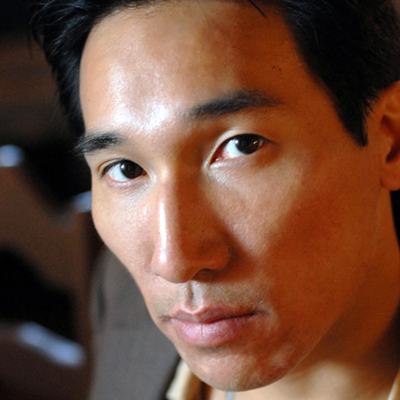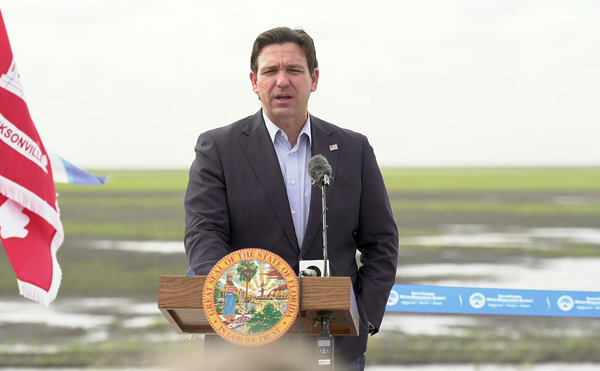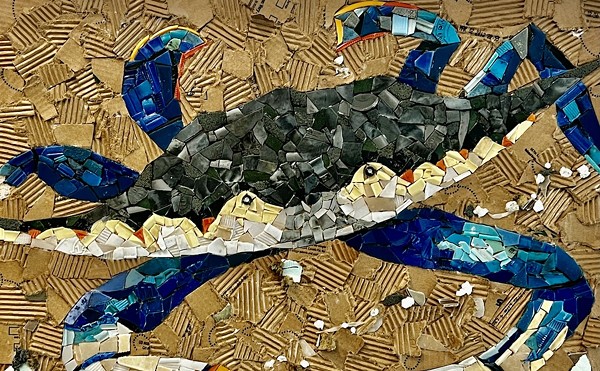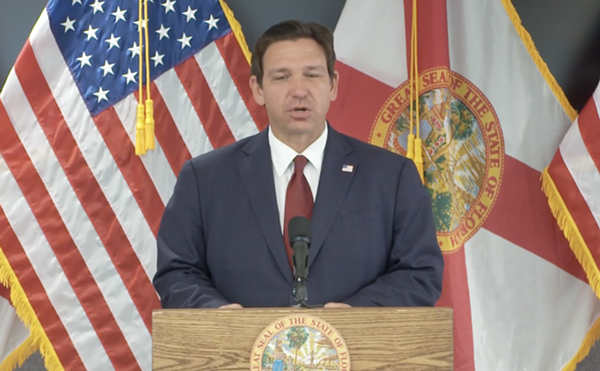For years, I've given the same basic tour to everyone who comes to visit me in Tampa from somewhere else: Drive down Bayshore Boulevard — pretty much the only place to see the bay. Then I'd cut through Hyde Park to the Plant Hotel, one of the few places you could see the town's history and get close to the river. Then I'd drive to Ybor, the other place you could see our history. These were the sights I knew they wouldn't see elsewhere, the things that made Tampa unique. Recently, I played tourist in my own town and rode the trolley to see Tampa through the eyes of people visiting for a convention or on a cruise ship. It's a whole different way of experiencing our town.
Last week, I covered the trip from Ybor City to the port, an area of town that was once invisible and inaccessible to most people. Now, with its cruise terminals, plazas and restaurants, it provides dramatic vistas of shipping lanes and access to a waterfront once lost to us. (I also erroneously wrote that the streetcar went under I-4. It is, in fact, the Lee Roy Selmon Expressway.)
This week, we board the train at The Tampa Tribune Station and head toward the winner of the corporate naming-rights race: the St. Pete Times Forum. Its original name, the Ice Palace, is more evocative — of what actually goes on inside and of the appearance of the building itself, an icy cliff of glass that resembles the smooth face of a glacier. The trolley turns left just short of the building and stops behind it at the poetically named Household Finance Corporation Station.
What catches my eye immediately is the lovely park across the street, with its view of Garrison Channel and the Mediterranean-style buildings of Harbour Island on the other side.
This is the new four-acre Fort Brooke Cotanchobee Park, designed by landscape architects Ted Kempton and Jason Rinard of the firm Hardeman, Kempton and Associates, who are also redesigning Ballast Point Park and Water Works Park on the Hillsborough River behind the old police station. Here they've done a masterful job of integrating the old and the new, the manmade and the natural, and many disparate elements to create an intimate urban nook that provides comfortable public access to the waterfront along a restored natural shoreline.
The park occupies part of the former site of Fort Brooke, which was built mostly to protect settlers from the natives. A memorial in the park is dedicated to the Seminole Indians whom the U.S. government shipped off from this point to designated territories somewhere west of the Mississippi during the Seminole Wars of Removal from 1817 till 1858.
Happily, Cotanchobee is not the name of a corporate sponsor, but rather the name natives had for this place, cotanî chobî. It means the big place where water meets land.
The monument, designed by Rick Penza, is a graceful, sweeping arched walkway of native coquina and limestone, which represents a bridge between past and present. Bronze plaques tell the story of Fort Brooke and the Seminole Wars of Removal.
A wall of water, symbolizing cleansing tears, is supposed to cascade behind the plaques. Unfortunately, the plumbing isn't working right now, but even without the tears, the memorial is sobering and lends the whole place a sorrowful air.
It's a gray, windy day when I visit, which adds to the melancholy feeling of the park. A tiny bird struggles to launch into the air against the wind. It finally gives up, taking shelter in the tall native grasses.
A floating dock takes you out into the water, where you can see fish and wading birds, and look back at the juxtaposition of history and modernity: In the foreground is the sandy, rocky shore planted with native vegetation, much of which grew naturally here during the time of the Seminoles. Among them are several kinds of grasses, black, white and red mangroves, coontie, Indian hawthorn and sabal palm. Slash pines, magnolias and live oaks are also here and will one day grow large enough to provide shade and baffle the noise and view of the city. The primal elements yield to the increasingly manmade: a granite riverwalk, a playground set, and around the periphery of the park, stone benches decorated with ceramic reliefs bearing symbols of the region's modern industry, agriculture, flora and cartography. Beyond the park, the Ice Palace looms against a backdrop of the city's skyline.
The park is a priceless, peaceful urban oasis and one of the high points on the trolley route. I leave it with reluctance and plans to return again soon.
The next stop on the streetcar line is the dazzling Southern Transportation Plaza Station, in front of the Marriott Hotel. This beautiful round concrete structure topped with a green glass conical roof crowned by a steel globe finial is a modern interpretation of an old railroad roundhouse. Silica carbide has been mixed into the concrete of the walls, so that it sparkles in the sun, and the green glass contains frits that screen the sun to reduce the heat in summer while admitting warming rays in winter.
The last stop on the streetcar line is the Convention Center, the first piece to be redeveloped in this area of town. Here, the conductor flips all the seatbacks to the opposite side of the bench so the riders are facing what was the back of the train. That's because it doesn't turn around; it simply heads back down the same track in the other direction.
What you see from the trolley is the product of more than 20 years of effort by people with a vision and a mission: preservationists, planners, administrators, politicians, architects and artists working — sometimes battling strong resistance — to create a comfortable and aesthetic urban environment with a strong sense of place.
Although this part of town has been promoted as a tourist draw, it's not just for visitors. It provides a palpable connection for those who live here to the region's past, its future and its relationship to the waterfront.
For more streetcar hours and fares, call 813-254-4278 or visit www.tecolinestreetcar.org.
Senior Editor Susan F. Edwards can be reached at [email protected].















